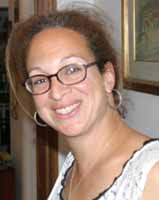
|
|
|
| Grottoes
Vatican City Colonnade Saints Floorplan #2 |
| Altars
Monuments The History Chronology |
| Related
Links Scala Sancta Zenit |
|
Festival Recalls Sweden's Queen Convert (Queen Christina of Sweden) By Elizabeth Lev ROME, NOV. 17, 2005 - Last week Rome paid homage to the woman who chose to be a Catholic rather than queen. The conversion of Queen Christina of Sweden, daughter of Lutheran King Gustavus Adolfus II, to Roman Catholicism astounded Europe in 1654 as did her declaration that she "couldn't live another day if she didn't live it in Rome." November marked the 350th anniversary of Queen Christina's arrival in Rome, and the Eternal City celebrated a weeklong series of concerts in honor of the great patroness of music, art and literature, whose dedication to culture earned her the title of the "Minerva of the North." An illustrious committee of patrons organized the event, from the Holy See to the Italian government to the embassies of France, Spain and Sweden. Their involvement allowed the "Roma Festival Barocco" to unite some of the city's most prestigious venues with performances of several unpublished scores from the Baroque era, the Age of Christina. The seven-day festival opened Nov. 6 with Mass at the Basilica of Santa Maria in Trastevere as a moving reminder of the courageous conversion that brought Christina to Rome. Tremendous efforts of both liturgical scholars and music scholars made the special Mass a truly extraordinary experience. A hitherto unknown manuscript by Boniface Graziani, an Italian composer born in 1604, was rediscovered in the archives of Santa Maria in Trastevere. The manuscript contains the composition for a Mass for four voices and for the first time in the modern era, the work was sung during the Mass celebrated by Archbishop Mauro Piacenza, the president of the Pontifical Commission of the Cultural Goods of the Church. Every day of the festival Rome offered splendid concerts. In the exquisite church of San Carlino alle Quattro Fontane, so tiny it could fit inside one of the piers of St. Peter's, musician Rosario Cicero played the intimate chamber music that so entertained the nobility of Rome during the 17th century. These pieces, several composed by A.M. Bortolotti who worked at Christina's court, were written for guitar and lute. Performed on faithful replicas of Baroque instruments, the music called to mind the many Caravaggio paintings representing youthful musicians. Numerous types of compositions were presented during the week demonstrating the wide variety of music produced in Christina's times. Organ recitals, Masses, semi-operatic dramas as well as oratorios provided a dazzling display of musical virtuosity. Although originated by St. Philip Neri in the 16th century, the "oratorio" fully developed under the patronage of Roman nobility during the following century. The papal families of the Pamphilj and the Rospigliosi, as well as Queen Christina herself, commissioned these works to be performed in their own domestic settings. The oratorio consists of sacred, but not liturgical, texts put to music. They were usually divided into two acts, often with a sermon between the two. Two oratorios were on the program this week, both taken from stories of saints. The first was titled "Santa Maria Maddalena de' Pazzi" by Giovanni Lorenzo Lulier. It was written at the request of Cardinal Francesco de' Medici in 1688 to celebrate the Florentine saint who had been canonized in 1666. It was performed in the magnificent Palazzo Farnese, the most beautiful residence in Rome, and home to Queen Christina for several years. The second oratorio, recounting the story of the conversion and penitence of St. Pelagia, was written for Queen Christina's court in 1677 by Alessandro Stradella. This story of a young woman, who while intelligent, was tempted by the devil to dedicate herself to worldly pleasures, must have had special meaning for Christina. This week, as in the days of old, Rome proved itself capable of arranging a celebration worthy of queen. Amid beautiful settings, surrounded by beguiling strains of music, the senses were delighted in order to draw the spirit to higher purpose.
* * *
|
